St. Louis Blues: 5 moves that got them to the Stanley Cup Final

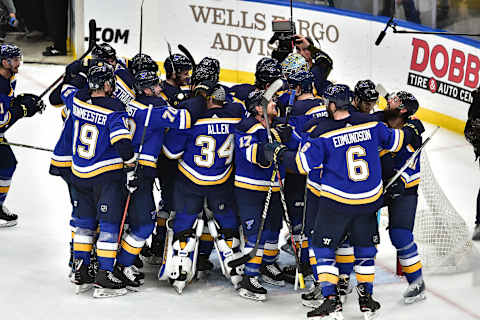
The St. Louis Blues have waited a long time to return to the Stanley Cup Final. Here are the top five moves they made in the past that led them to hockey’s biggest stage.
The St. Louis Blues wasted no time getting to the Stanley Cup Final after their inception. In fact, the Blues were one of the last two teams standing for their first three seasons in the NHL. They were swept in 1968 and 1969 by the Montreal Canadiens and swept once again in 1970 by Bobby Orr‘s Boston Bruins.
It was quite an accomplishment for an expansion team to have three straight final appearances. They ultimately proved to be in over their heads as they went winless in each of those trips. Fans in St. Louis must have been assuming success came easy in the NHL.
More from Puck Prose
- Detroit Red Wings 2023 Rookie Camp Has Plenty of Ups and Downs
- This Columbus Blue Jackets rookie doesn’t want to be forgotten
- 2 trades the Boston Bruins must make to secure the Stanley Cup
- 3 reasons the Avalanche won’t win the Stanley Cup in 2024
- This is a big year for Alex Turcotte and the Los Angeles Kings
However, the team took another 49 years to return to the Stanley Cup Finals. They had some great coaches over the years, including Scotty Bowman, Al Arbour, Ken Hitchcock and Joel Quenneville who would all win Stanley Cups elsewhere.
They had great players like Adam Oates, Brett Hull, Chris Pronger, Al MacInnis and Bernie Federko to name a few, but they could never get back to the Final.
That is, until this season. The Blues were infamously the worst team in the league just after New Year’s Day, but climbed all the way back and are now two wins away from lifting the first Stanley Cup in franchise history.
How did they build the best team in franchise history? Let’s take a look at the top five moves that sent this team to the Stanley Cup Final.
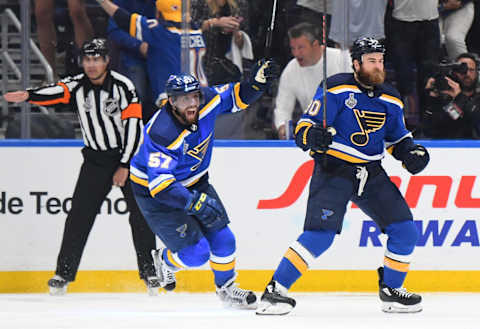
5. David Perron
Acquired: Well, it’s a long story. But most recently he was signed as a free agent on July 1, 2018.
David Perron had an absolutely meteoric rise in the hockey world as a teenager. In 2004-05, as a 16-year-old, Perron was playing Midget C hockey in Quebec. Somehow, he was playing in the National Hockey League while still a teenager just three years later.
The Sherbrooke native jumped from there to the Quebec Junior AAA level and then was off to the Lewiston Maineiacs of the QMJHL a season later. Following an excellent solo campaign with Lewiston that included a trip to the Memorial Cup, Perron was a first round pick by the Blues in 2007.
Just three years after leading a Midget C team, Perron was suiting up for the St. Louis Blues in one of the least likely NHL debuts of all time. He played six seasons in St. Louis before being dealt to the Edmonton Oilers. Edmonton shipped him to the Pittsburgh Penguins who sent him to the Anaheim Ducks.
Finally, Perron became a free agent in 2016 and signed a two year deal to return to the Blues. After scoring 46 points, he was claimed by the Vegas Golden Knights in the expansion draft. A 66 point season in Vegas led to him becoming a free agent again and a three year contract to return to St. Louis for a third tour of duty.
Perron rewarded the determination of the Blues management team to keep bringing him back. he scored 23 goals and 46 points in 57 games this season. He missed 25 games but was still the third highest goal scorer on the team and finished fourth in points.
When St. Louis was trailing 3-2 in their second round series with the Dallas Stars, Perron scored the game’s winning goal to send the series to Game 7. Perhaps that will be enough to convince the Blues they shouldn’t let him leave town a third time.
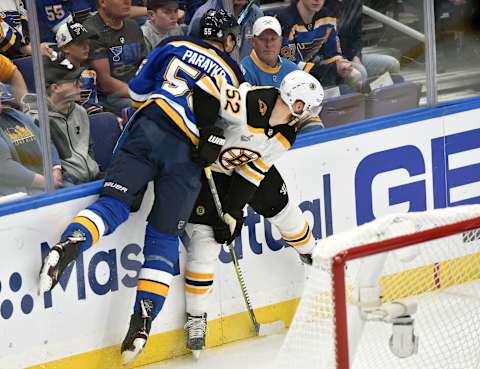
4. Colton Parayko
Acquired: Third round of the 2012 NHL Draft.
The Blues got the steal of the 2012 NHL Draft when they took Colton Parayko in the third round. He was playing in the Alberta Junior Hockey League, foregoing a chance at the more prestigious Western Hockey League so that he could keep his NCAA eligibility.
The Blues needed to be patient, but that isn’t a problem with third round picks. The St. Albert, Alberta native would go on to play the next three seasons after his draft with the University of Alaska-Fairbanks.
The 6’6″ right shot defenceman polished his two-way game at College and stepped into the NHL in 2015-16 ready to take on a top four role. He battled a bit for ice time with Alex Pietrangelo and Kevin Shattenkirk also on the right side, but didn’t take long to establish himself as an elite defenceman.
Today, Parayko is averaging 27 minutes per game in the first four games of the Stanley Cup Final. He is routinely tasked with playing against opposing teams top players and has made a habit of shutting them down.
He’s also chipped in 12 points in 23 postseason games so far. Not bad for a guy who was taken 86th overall in 2012.
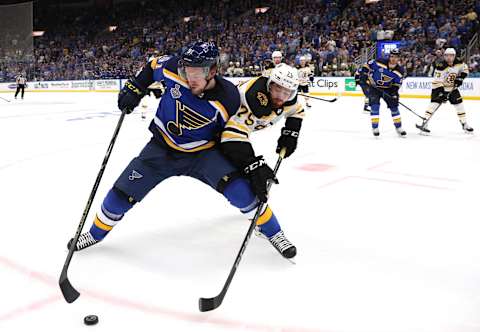
3. Vladimir Tarasenko
Acquired: Traded top prospect David Rundblad for 16th overall pick in 2010 NHL Draft.
The St. Louis Blues drafted a top prospect in 2009 when they took David Rundblad with the 17th overall pick. He was a two-way Swedish defenceman who was pegged as having huge potential and a can’t-miss prospect.
The Blues turned heads when they swapped him exactly on year later for the 16th overall pick in the 2010 NHL Draft. They made the trade on the draft floor and immediately selected Russian winger Vladimir Tarasenko.
We all know now how great this trade turned out for the Blues, but it was really controversial at the time. I can’t overstate how good of a prospect Rundblad was at the time. Everyone knew Tarasenko had skills, but that dreaded Russian factor loomed large over him when the pick was made.
It was not long before the Tarasenko pick that Nikita Filatov and Nik Zherdev failed to live up to their potential. Alex Radulov reached his potential early with the Nashville Predators, but had recently left North America for a bigger payday in the KHL.
There was tons of risk involved with this trade. A year later, Tarasenko scored 19 points in 42 games in the KHL, while Rundblad was at just under a point per game in the Swedish Elite League and won their league’s top defenceman award at 20 years of age.
It didn’t look like a great trade at the time for the Blues. However, coming off his fifth straight 30 goal season, Tarasenko has proven to be one of the best moves the Blues have made in building this Stanley Cup contending team.
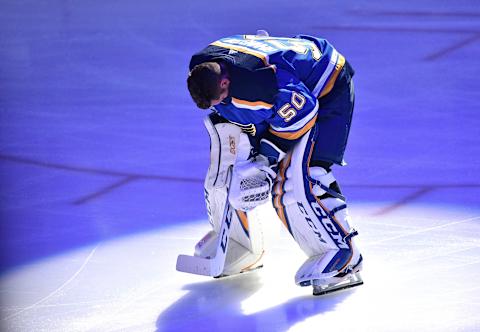
2. Jordan Binnington
Drafted in the third round of the 2011 NHL Draft.
In 2011, the St. Louis Blues cupboards were fully stocked with goaltenders. They had recently acquired Jaroslav Halak to be the team’s starter after an incredible run with the Montreal Canadiens to the conference final. They had Brian Elliott as a backup option.
In the minors, they had two excellent prospects battling for playing time with the Peoria Rivermen in the American Hockey League. Ben Bishop and Jake Allen both looked like future National Hockey League starting goaltender.
Still, with their third round pick in the 2011 NHL Draft, the Blues took goaltender Jordan Binnington. He was coming off a decent year with the Owen Sound Attack of the Ontario Hockey League. His 3.05 goals against average and .899 save percentage did not scream future Conn Smythe candidate.
Yet, here we are. The Blues would be amping up for the NHL Draft right now if not for Binnington’s heroics. As a matter of fact, they likely would have been preparing for the draft two months ago when the playoffs began.
The team was in dead last in the NHL standings when they handed the starter’s role over to Binnington. His 1.89 GAA and .927 SV% have led the team all the way to the Stanley Cup Final.
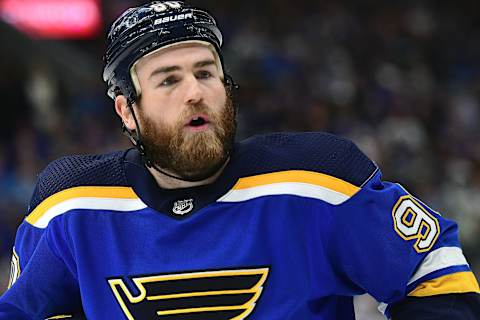
1. Ryan O’Reilly
Acquired: Trade from the Buffalo Sabres on July 1, 2018.
The Blues made a huge splash on July 1 last year, but it wasn’t a free agent they acquired. They dealt promising prospect Tage Thompson, Patrik Berglund and Vladimir Sobotka along with this year’s first round pick and a second round pick in 2021 for center Ryan O’Reilly.
O’Reilly had made things difficult in Colorado with tough contract negotiations. The Avalanche wanted him to take less than he was worth because of his age and the fact he was a restricted free agent. Now, just a few years later, RFA’s are getting huge contracts all around the league.
They can thank O’Reilly for that. He was eventually dealt to the Buffalo Sabres but playing on a struggling team really affected him. He said as much at the end of the season, basically telling teh media he had lost his desire to play hockey.
The Blues figured a chance of scenery would do him good, and it sure has. O’Reilly is leading the team in playoff points with 18 in 23 games, and plays over 2:30 more than any other forward on his team in this postseason run. He plays in every single situation, and is the most used forward for the Blues at even strength, on the power play and while shorthanded.
Next. Every Team's Greatest Player Of All-Time. dark
O’Reilly is the unquestioned leader on the ice for this Blues team, and they certainly would not have made it this far without him. Their gamble to bring him in a year ago, even with his $7.5 million salary and him openly admitting he lost his passion for the game has paid off big time and is the biggest reason the St. Louis Blues have a chance to win the Stanley Cup.